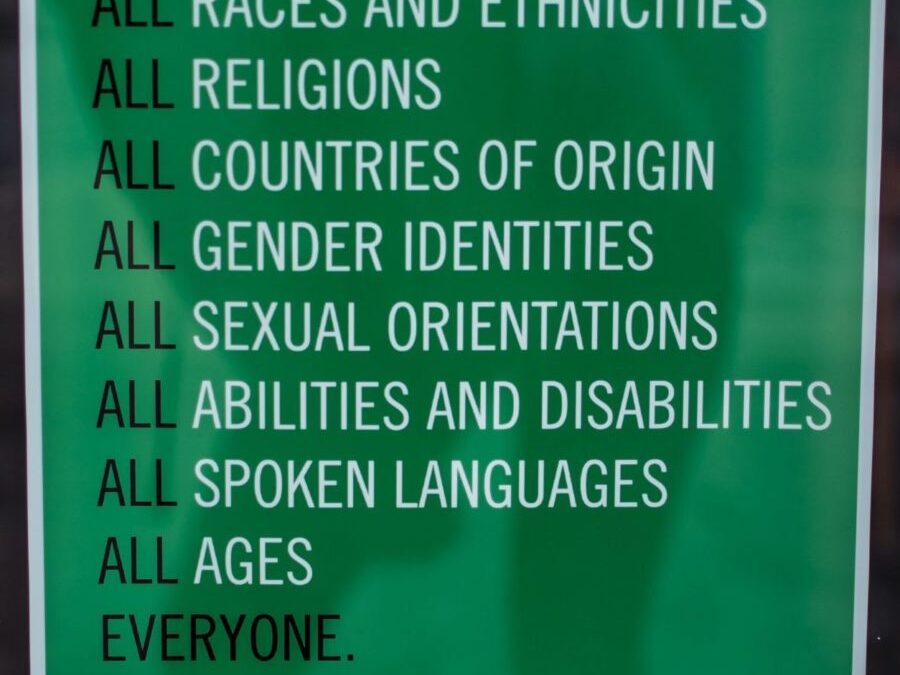
by user_dd | May 23, 2022 | Community Conversations
So, we all know the term ‘physics’. Yet, how many of us are adept in understanding the term ‘metaphysics’? What’s the difference? (If you haven’t read our prior post around this topic, dive in).
Bluntly put, metaphysics provide a framework for understanding how our universe works (not just the physical matter that we perceive in our ‘reality’).
Alright, so let’s get back to our topic at hand; ‘toxic masculinity’. When I say that this concept is not real, I am saying that this term is subjective.
All subjectivity is ultimately not real.
The term “toxic masculinity” does not mean the same thing to everyone. There is no shared agreement or understanding about what is toxic versus not toxic. There is also a lot of confusion about what is masculine, but we’ll get to that later.
So when you put two words together to describe behaviors for which there is no shared agreement you end up with not meaning anything at all.
If one person can label a cis-straight male asking a woman out on a date “toxic,” and another person thinks that’s completely acceptable behavior, then there’s nothing objective or real about that distinction. If two people see a man open the door for a woman, and one reports it as toxic while another reports it as him simply being a gentleman, was it toxic masculinity?
“Objective” or “real” means there’s something observable and measurable that does not change based on who’s looking. That there’s agreement based on a shared experience. You don’t have that with ‘toxic masculinity.’
You see, something that is objectively real can’t be changed by your thoughts, opinions, or beliefs.
Conversely, anything that can be changed just by thinking about it, is subjective, or not real.
I can’t think a chair into being a car. I can say it’s a car, tell others it’s a car, and convince my baby brother that if he sits on the chair we can go for a ride, but the reality is, at the end of the day, it’s still a chair. And to my little brother’s dismay, it’s not going anywhere.
This is illustrated in the evolution of how LGBT became LGBTQII2+. If these distinctions were real, then they could not change. The reality is that as long as you can keep adding distinctions to the pile of letters sexual orientation has become, then you’re clearly talking about something subjective, not objective, not real. If the distinctions were real, then they wouldn’t need to be explained, adapted, contextualized, re-defined, parsed out, distinguished in ANY way, and then added onto by successive generations. They would just be…unfettered in their objective truth.
We’re creating new levels of distinctions to try and get at more nuances of identity and expression.
But none of that’s real. It’s convenient maybe, has meaning to some, but it’s not real.
Are these distinctions useful to people? Sure. I like telling women I’m a gay man. It relieves them of the social labor of having to guard themselves against me hitting on them with a sexual motive, when I’m merely trying to have a pleasant conversation. But how many gay men have actually had sex with a woman? I personally know many gay
men who have not only children, but also grandchildren. So clearly they’ve had sex with women.
So the distinction, while convenient and maybe even meaningful, is not real.
Clearly being “gay” doesn’t mean the same thing to everyone.
Are you gay because you are male and have had a sexual experience with another man? Isn’t that what a bisexual male does? How many straight men have experimented sexually with other men? Does one gay experience make you gay? Or is there a minimum number, like 5 times, and then you’re officially gay.
Are you only gay if you march in parades and proudly display your homosexuality? Does eschewing that behavior mean we ‘take your Gay card away?’
As you all know, only you can define this identity for yourself. No one can tell you whether you’re gay, bi, whatever. I don’t care what you are, if it serves you, go for it. But if I and no one else can tell by looking at you or your behavior and make that distinction accurately most of the time, it isn’t a real distinction.
It’s convenient and maybe even meaningful, but it’s not real.
Here’s another example: We know that the experience of a black trans man is not the same as a white trans woman. Just because they’re both trans doesn’t mean they have the same experience.
Their race brings a very different dimension to their identity and experience in our culture. This is due to the effect of intersectionality on identity.
So when I tell you they are both trans, does that communicate anything meaningful to you about their experience? Does the term distinguish something or tell you something that helps you understand their experience holistically? It may, but also, it may not.
So the distinction, while convenient and maybe even meaningful, is not real.
Misunderstanding what’s objectively real versus what’s subjectively real, meaning what’s real for me and maybe not real for you, is the source of endless confusion in our society.
When we replace reality with subjectivity, we are damaging our own ability to understand who we really are, to find our place in the world, and most importantly: to navigate and adapt to change.
Throughout the ages, humans have learned to live in increasingly complex environments. Charles Darwin, father of the theory of evolution said, “It’s not the strongest or the most intelligent who will survive, the future belongs to those who can best manage change.”
Because we have forgotten who we are, I believe we now live in a world where humans have forgotten how to be human.
The core work of being human is learning to ask the right questions. The only source of ‘capital T’ Truth is you!
Truth resonates with the wisdom of the heart. So, let your answers come from your heart. Your mind is polluted with all sorts of confusing thoughts and ideas programmed into you by society, or ingrained from prior traumas and dramas that aren’t who you truly are.
Our methods to distinguish what’s right from wrong, such as labeling behaviors as ‘toxic masculinity’ are actually creating more separation and hate, when what we really need is unity and love.
I say this, because our kids today are confused. By not pointing out which way is objectively north, they have no true orientation, no way to navigate the complexities of modern living.
For the sake of their psychological health, at least be clear that there’s a real, true difference between a man and woman. Stop pretending like there’s not.
Gender is real.
It’s embedded into reality in a way that will persist ever after we, and our opinions, die.
But “Toxic Masculinity” is not real. It’s a subjective opinion masquerading as objective reality. This is dangerous.
I’m just asking you to stop believing your subjective reality is objectively real. It’s not!
Trust me, you don’t need other people to validate your subjective reality in order to thrive. Gay men do it all the time. We learn to thrive in environments where other people disagree with our reality. Every day. 24/7. That’s life.

by user_dd | Feb 28, 2022 | Community Conversations
So if you’ve been noticing, there’s a massive collective shift going on. Atop our precious little spinning rock floating in space, we’re experiencing energetic changes that aren’t difficult to see and feel. These shifts that are happening are personal, global, planetary and utterly cosmic. Of course, how we relate to these shifts is an essential aspect of how well we can adapt to them and embrace the newness that continues to arrive.
The irony dwells in the space that brings balance to tradition and newness. How can we stay true to what’s been, in order to align ourselves with all that’s coming? How can we preserve the traditions that have sustained us, while also inspiring ourselves to stay flexible and inclusive toward all the radical change that’s emerging? These are some important questions to reflect on at this time.
Gender Polarity
We’re seeing big change happening with regard to gender polarity. There has been a reckoning with the patriarchal power structures and antiquated hegemonic frameworks in many of the societies around the world. If we are to usher in a new paradigm of love and feminine leadership, we will need some serious grace. Simply put, we cannot demonize ‘the man’ for what has happened in our planetary history. Sure, we’ve had many injustices occur and are learning the deeply negative impacts of having people in power command with righteous greed. These are important to note.
However, villainizing the “other”, is a very dangerous route to take, and I’m here to encourage you otherwise. You see, there’s something deeply relieving about the power of forgiveness to empower us to meet the ever-arriving ‘now’. Forgiving injustices is not about turning a blind eye. Instead, it’s about looking at the circumstance with compassion, in order to move forward with love in the heart and practical logic in the mind (perhaps not in equal proportion).
Proportions and Differentials
So that brings me to the concept of proportions. At the end of the day, equality does not equal sameness. What the first wave feminists did for women was great, and at the same time, their efforts have now translated to a mass amount of Western women rejecting their femininity in order to make it in the ‘man’s world’. What’s important to note are the proportions of energy; the differentials between passive and active energy are an essential aspect of one’s existence to be looked at and understood. For, in Hermetic philosophy, balance is not the same as equal; differentials in proportion allow for creation and manifestation to occur (i.e. 70/30 vs 50/50).
Within the Modern Mystery School, we are guardians of the sanctity of this polarity within our culture. We’re responsible to adhere to this tradition, as stewards of global and interplanetary balance. This work, however vast it may come off, is work that starts within. So consider this an invitation to take a read on your own passive/active proportion and feel what came up for you while reading this! It’s time we break down the calcification that’s come from a rigid devotion to ‘equality’, and celebrate our diversity, celebrate our depth and our differentials.

by user_dd | Feb 21, 2022 | Community Conversations
I’m going to expound on the notion of ‘Toxic Masculinity’ in this 3-part blog series. The first is from the perspective of Culture and the second is from the perspective of Hermetics, and the last is Gender. We’ll start from the perspective of culture.
To be clear, I’m not saying your rape didn’t happen or your sexual assault didn’t happen. This is not what I’m saying. In no way am I attempting to silence survivors of abuse, discredit them, or resist their experience in any way. I acknowledge that rape happens, sexual harassment and assault happens, and that these are simply unacceptable behaviors that need to be addressed in our communities and in our society.
I hope we’re clear on that before continuing on together.
When I say, in my opinion, that “toxic masculinity” is not real, I’m canceling an ironically toxic IDEA or TERM that is causing untold damage to our community. It is violence to use the term, and this violence is the very problem we are trying to eliminate.
Origin Story
The following is an excerpt from “The Classroom Origins of Toxic Masculinity”: One of the first appearances of toxic masculinity in the mainstream press was in a 1990 New Republic article by Daniel Gross.
“The Gender Rap: ‘Toxic Masculinity’ and Other Male Troubles” focused on a new-age movement that appeared to resonate with a healthy number of American men. Gross credited Shepherd Bliss—with coining toxic masculinity as a phrase “to describe that part of the male psyche that is abusive.”
Scholars also later point to psychiatrist Dr. Terry A. Kupers as the source of “toxic masculinity” as we now know it, particularly his definition in a 2005 prison study: “Toxic masculinity is the constellation of socially regressive male traits that serve to foster domination, the devaluation of women, homophobia, and wanton violence.”
Kupers had been studying incarcerated masculinity for most of his career, but in the ‘80’s he was involved in the pro-feminist men’s movement and realized he could integrate his knowledge of gender with his knowledge of prisons. Kupers found that Connell’s hegemonic masculinity, when applied to prisons, was in fact toxic masculinity—which is to say prison is toxic masculinity in its “pure form.”
He points specifically to black men who are disproportionately incarcerated by America’s “justice” system. These are men for whom institutionalized racism has shut them off from “positive ways” of expressing masculinity, excelling at school or at work, for instance, causing them to resort to “negative ways” like crime.
In prison the lack of individual agency is complete, so the toxicity is equally complete. “I don’t think it’s a matter of them being inclined to fight with each other and gain dominance; they’re not,” Kupers says. “Rather they’ve been deprived of all the more positive avenues to get ahead so they choose to maintain their manhood in the prison yard.”
Many people now view masculinity and the gender roles it creates as a combination of behaviors shaped by several factors, including age, race, class, culture, sexuality and religion.
As such, what defines masculinity can take many different forms. What one society or even subculture views as masculine, another may reject.
Masculinity, then, becomes a shifting set of ideas rather than a hard, narrow set of rules.
Feminists have highlighted for us how the male dominated hierarchies, like the Patriarchy, have been oppressive, antagonistic, and abusive of both female bodied individuals and the feminine virtues. Some have even concluded that masculinity itself is essentially violent.
While this perspective has its uses, particularly in the liberation of the masculine and feminine energies from the constraints of patriarchal stereotypes, there are still aspects of this view that are problematic.
For example, because of this term, there’s apparently a problem with men being masculine.
Actually, like the patriarchy, ‘toxic masculinity’ is an attack on femininity as well as masculinity. Those who use shame to attack or control are caught up in structures used to dominate not only women but also men. The use of this term is based on FEAR.
“Hegemonic masculinity” from the above prison studies and patriarchy are NOT the expression of pure masculinity, or “Divine Masculinity” as we like to call it in the Mystery School. Masculinity is NOT rooted in abuse.
“Hegemonic masculinity” like “patriarchy” are immature expressions of power control issues, usually based in some sort of stunted developmental phase in a person’s life.
In using the term toxic masculinity, I do not believe we’re talking about something real, we’re talking about a term that was created to describe how men operate in a fabricated (or unreal) environment where they completely lack agency (i.e. prison culture).
The term describes a category of behaviors that we already have words for. I believe what we mean by “toxic masculinity” is already clearly (and accurately) defined by “misogynistic behaviors that lead to emotional and sexual violence”.
The problem with the term toxic masculinity is that it becomes impossible to separate “toxic” from “masculinity.” Shepherd Bliss in the citation above emphasized that the expression he invented is “not meant to condemn all males.” I propose that this term inadvertently shames all things masculine, and thus lacks the nuance necessary to have an honest discussion about what behaviors are desirable and undesirable in our culture and in our collective consciousness.
And ‘toxic’ anything is again, in my opinion, a violent and ultimately non-useful method for addressing the societal issue of immature humans doing violent things.
Words matter and ‘toxic masculinity’ is woefully inadequate for the task of transforming culture.

by user_dd | Jan 26, 2022 | Community Conversations
It’s Time to Reclaim the Culture of Healing
What even is a cult? The word ‘cult’ gets thrown around in our modern times with a flippant ease of judgment. Yet, what does this term really mean? Sure, there have been (and still are) many subgroups organized around religious dogma that are sustained through hierarchical dominance structures that are unhealthy to their core, including all sorts of distortion of truth and corruption of purity.
This, in many ways, needs to evolve like many other aspects of our modern day culture. But let’s acknowledge that the presence of these negative expressions of culture have tainted the word that is otherwise value free and objective in its description of what is. There is an aspect of this term that is all too quickly slapped onto any organized group with a spiritual quest. This aspect, creating an easeful ‘go-to’ grip for folks trying to deepen the separation story of the psyche, seems to exhibit a consistent misunderstanding of esoteric study.
Just because it’s occult, doesn’t make it a cult. And even if it did, is a ‘cult’ inherently nefarious? There are both benevolent and malicious politicians, aren’t there? It seems there’s an opportunity that’s presenting itself for us to heal the damage, bridge the chasm, and harmonize the trauma around spirituality through the lens of this term.
Building Culture
We’ve largely contained the term ‘culture’ within the psychological confines of social and political frameworks and applications. Yet, when we look at the term ‘culture’ through the lens of biology or agriculture, we find that there are many important aspects of the findings that we’d benefit from applying to the social and political realms. Growing and sustaining a healthy culture depends on a myriad of delicate variables. Domination within a culture doesn’t translate to harmony or symbiosis.
Life thrives with diversity, with strong willed and independent parts participating in a whole. We can be this way, as a species. We can contribute to the whole in beneficial ways when we deeply recognize ourselves as a part of it, not apart from it. This means we must evolve out of the archaic ‘cult’ concept (both in our assignment of this term to occult pursuits, and our application of obsolete control within those groups considered to be cult-like).
Gone are the days of worshiping external entities. We’re remembering, slowly but surely, that all that’s outside us is within us, and therefore, worshiping the body temple we’re currently incarnated in is key to our development. Alas, this means we don’t need to kneel before a dominant leader when we really recognize the omnipotent Source of Creation as that which is innately within us, as our birth right.
Transformation is Uncomfortable!
The roller coaster of healing and wholling isn’t for the faint of heart. Remembering our innate wholeness is a path that’s filled with moments of big change and recalibration. For those jostled by change, both internal and external, they’d likely prefer sitting beside the roller coaster and watching those shaking with anticipation as they ascend to new heights, and screaming as they plummet into the depths. Choosing to take the ride is only for those who can learn to manage their systems, command their ships, and embrace the discomfort of transformation.
These are the skillsets acquired through the spiritual path. No, not the path that leads you into an eddy of inertial patterns wrought with distorted traditions and outdated recitations. It’s the path of righteousness that empowers each individual with an embodiment of their free will, and an activation of this will as a conduit for benevolent creation to move through it.
More people are needed on this path; in order for our species to continue enjoying this planet we call home, we will need to wake up to the power that sits within ourselves in order to meet the pressures of change with the competent adaptability.
So where can we gather to awaken our innate abilities? Those abilities that empower us with the remembrance of the source of creation that lives within us? Within communities of practice, communities of therapy and healing, ignited from the inside out.
Therapeutic Communities
The etymology of the term ‘therapy’ can be tracked back through ancient Greece, expounding on the capacities to heal and cure. Yet, it seems we may have outsourced this ability to others, all too often. Ultimately, it’s the therapist’s role to simply amplify one’s awareness of the choices available to them, so they can feel empowered to make choices that resound with their own inner knowing.
So, what are therapeutic communities aiming to accomplish? An embodied, activated, and spiritually participatory populous that can meet the challenges we face as a species with empowered choice. The “fix me, doctor” culture must end. It is up to us as individuals to stop outsourcing our God-like abilities, and come back into belonging within communities that remind us of our essence. Whether or not they’re deemed ‘cults’….

by user_dd | Jan 14, 2022 | Community Conversations
Understanding the Etymology of Physikos
Initial Separation Story
There was a separation that occurred long ago. A separation between physical and non-physical, or metaphysical. This separation happened not only in the realm of science, but percolated into our social and societal structures, our cultural and psychological frameworks.
In ancient Greece, the word physikos represented all physical form; encapsulating the study of natural phenomena where matter is observed and its properties are quantified. This term became a representation of all things physical, all things governed by, agreeable and pertaining to nature.
Naturally, this term adapted to what we now understand to be the realm of physics; the branch of science pertaining to the structure of matter and how it moves through space and time. There are governing principles, frameworks and formulas that have established an impressive breadth of understanding regarding these phenomena.
Alright, so back to the aforementioned separation.
This separation, between physics and metaphysics, happened to a large degree due to our inability to measure or quantify the non-physical realm. This inability gave rise to a thread of fear around that which can’t be proven, observed, or measured. Due to this fear, we decided at some point in human history, to separate out that which can be measured from all that which cannot. This separation looked like a fundamental fissure between spirit and science, church and state, and ultimately translated to a stagnation of the former while the latter (science and society sans spirit) was awarded with the abilities to continue evolving.
While science continued to develop, expand, progress and evolve, all things in the realm of spirit and religion were put on hold; the sacred texts were to be studied, protected and preserved. Not, by any means, were they to be explored and applied in a way that could look like the evolutionary progress enjoyed by science. This was all a function of the fact that we, as humans, were afraid of what we were unsure of. Afraid of the uncertainty. Afraid of the unknown and unwilling to stand in humble admittance of the limitation of our cognitive faculties in measuring the immeasurable.
Evolutionary Update!
The fear that continues weaving this thread into the current fabric of humanity is no longer relevant, don’t you think? Here we are, at a time where we’re realizing as a species that our cognitive faculties are simply one aspect of our myriad and comprehensive abilities as multidimensional beings.
It’s time for us to embrace our comprehensive capacities and competences. For us to recognize that the magick dwells within that overlapping center of the venn diagram, where science and spirit overlap. Remember the Vesica Pisces? This is the center we can explore through the Mystery School teachings, whose magick we cover in the Magick of the 7 Mystery Schools class (see our calendar for the next offering).
Skeptical? Curious? All are welcome, come join us in the inquiry.






